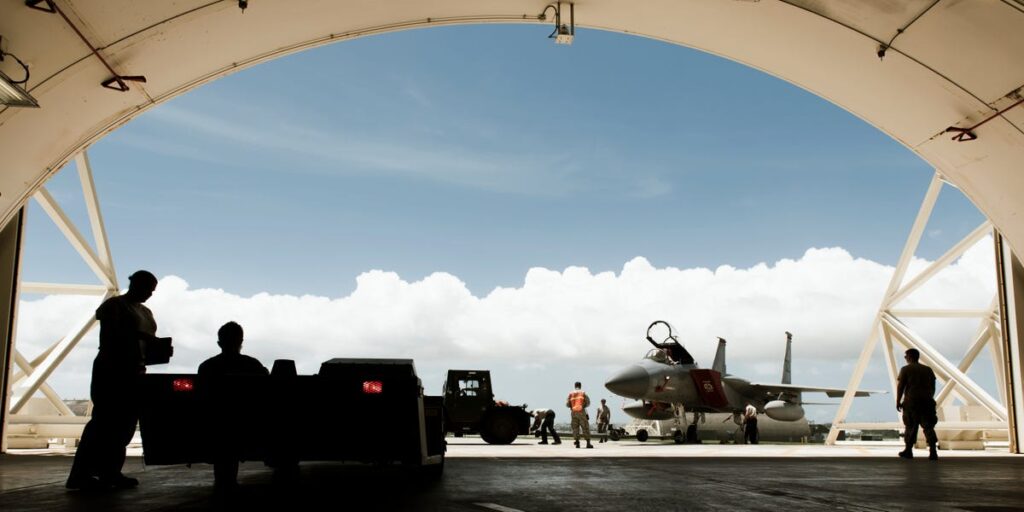A Ukrainian surprise drone attack inside Russia earlier this year — an asymmetric success dubbed Operation Spiderweb — is forcing the US Air Force to rethink how it protects its bombers and bases from the threat of drones.
At a talk on Wednesday organized by the Mitchell Institute for Aerospace Studies think tank, Lt. Gen. Andrew Gabara, deputy chief of staff for strategic deterrence and nuclear integration for the Air Force, discussed key takeaways from the aftermath of Ukraine’s operation.
Drones and other “disruptive” technologies seen in Ukraine, he said, “will have big implications not just for our bomber force or our nuclear force but really any critical infrastructure.” The Air Force is working to develop countermeasures for those threats, Gabara added.
Hardened facilities hosting nuclear forces, like US intercontinental ballistic missiles and other strategic capabilities like B-2 Spirit bombers and cruise missiles for B-52 Stratofortress bombers, are “in a better position than some of our other mission spaces,” Gabara said.
But the Air Force is actively pushing for more ways to defend against drones and uncrewed aerial vehicles. “We have counter-drone capabilities at these bases. Do we need to continue to modernize? Do we need to accelerate? Yeah, absolutely, all that,” he said.
The implications of Operation Spiderweb — in which Ukraine snuck more than 100 drones into Russian territory, launching them from trucks parked near air bases — have been a major point of discussion for US military officials in recent months.
Estimates on the number and types of aircraft damaged and destroyed in the operation have varied; Ukraine reported 41 aircraft, including strategic bombers, were hit, and at least 13 were destroyed. US estimates were lower. It, nonetheless, highlighted the threat drones represent.
After the attack, US Navy Secretary John Phelen and US Army Chief of Staff Gen. Randy George both noted that the US military needs to adapt to the quickening speed of warfare. At an artificial intelligence conference in June, Phelan called Operation Spiderweb “pretty prolific,” while George pointed out that the US needs to be more agile and continue its investments in and acquisition of counter-drone systems.
The asymmetric advantage of using relatively inexpensive drones to damage and destroy exquisite Russian aircraft is also something that the US needs to think about more, George said.
Ukraine has exploited such opportunities throughout the war, demonstrating the potential of drones and other uncrewed systems as cheap but effective alternatives to other weaponry.
Warfare experts have observed that Operation Spiderweb will likely continue to fuel more conversations about anti-drone defenses at bases, including more hardening of shelters and coverings for protecting any openings through which drones could fly to target the assets inside.
Military planners have long understood that combat aircraft are vulnerable on the ground and that striking them before they can take off can cripple a force’s airpower. Operation Spiderweb, however, has delivered new lessons to global militaries.
Read the full article here


